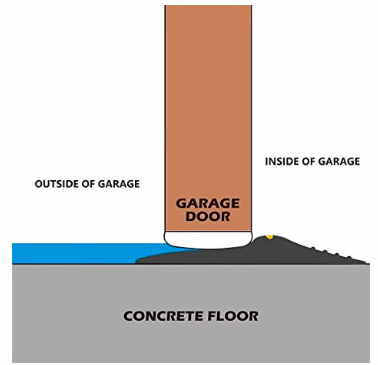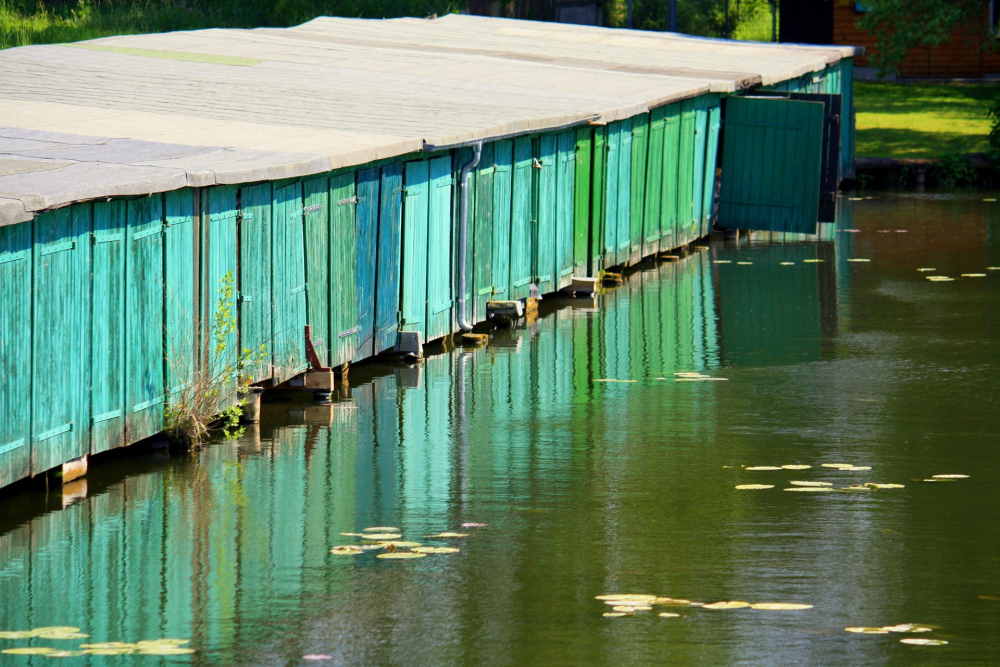Garage doors play a significant role in keeping our vehicles and other belongings safe from external elements such as theft and weather conditions. However, water damage can be a major concern for garage owners, especially those living in areas with frequent rain and snow.
Water can seep through the garage door, leading to costly repairs and even structural damage. That’s why waterproofing the garage door has become an essential measure to protect the garage and its contents.
In this context, waterproofing refers to the process of adding a layer of protection to the garage door to prevent water from entering. In this article, we will discuss the importance of waterproofing garage doors, the different methods used to waterproof them, and the benefits of doing so.
Waterproofing a garage door is an important task to protect your garage from water damage, especially during heavy rain or snowfall. Here are the steps you can follow to waterproof your garage door:
- Clean the surface: Before starting the waterproofing process, it is important to clean the surface of the garage door to remove any dirt or debris. Use a pressure washer or a scrub brush and mild detergent to clean the surface thoroughly.
- Seal the gaps: Check for any gaps or cracks in the garage door and seal them using a waterproof sealant or caulk. Pay special attention to the bottom of the door, where water can seep in easily.
- Apply a waterproof coating: You can use waterproof paint or a sealant to coat the garage door surface. This will help prevent water from penetrating the door and causing damage. Apply the coating evenly using a roller or a paintbrush, and let it dry completely before using the garage.
- Install weatherstripping: Weatherstripping is a great way to seal the gaps between the garage door and the frame. Install weatherstripping along the sides and top of the garage door to prevent water from entering.
- Check the garage floor: Finally, check the garage floor for any cracks or gaps that may allow water to seep in. If you find any, seal them using a waterproof sealant or epoxy.
By following these steps, you can effectively waterproof your garage door and protect your garage from water damage.
How to seal the garage door?
Use a sealant or caulk to seal any gaps or cracks in the garage door. Pay special attention to the bottom of the door where the door meets the floor. Use a waterproof sealant to prevent water from seeping into the garage.

These garage door threshold seals are installed quickly and simply. Every seal measures slightly longer to ensure you have just the right length.
Use a garage door threshold: Installing a garage door threshold at the bottom of the garage door can help seal the gap between the door and the floor. The threshold will also help prevent debris and water from entering the garage.
Check the garage door opener: If you have a garage door opener, make sure it is properly adjusted and seals the door when closed. Adjust the opener if necessary to ensure it is sealing the door properly.
What type of Weatherstripping to use?
There are several types of weatherstripping available that you can use to seal your garage door. The type of weatherstripping you choose will depend on your specific needs and the type of garage door you have. Here are some of the most common types of weatherstripping and their features:
- PVC Weatherstripping: PVC weatherstripping is a type of vinyl material that is durable and flexible. It is great for sealing gaps on the sides and top of the garage door. PVC weatherstripping is also resistant to temperature changes and UV rays.
- EPDM Rubber Weatherstripping: EPDM rubber weatherstripping is a type of synthetic rubber that is great for sealing gaps on the sides and top of the garage door. It is durable and flexible, and it can withstand extreme temperatures.
- Foam Weatherstripping: Foam weatherstripping is made of polyurethane foam and is great for sealing small gaps and cracks in the garage door. It is easy to install and can be cut to fit the specific size of the gap.
Door Sweeps: Door sweeps are typically made of aluminum or stainless steel and are great for sealing the gap between the bottom of the garage door and the floor. They are durable and can withstand heavy use.
When choosing weatherstripping for your garage door, consider factors such as durability, flexibility, ease of installation, and resistance to temperature changes and UV rays. You may also want to consult with a professional to ensure you choose the right weatherstripping for your specific garage door.
Conclusion
In conclusion, waterproofing and sealing your garage door is an important task to protect your garage from water damage, drafts, and energy loss. By following the steps outlined above, you can effectively waterproof and seal your garage door, preventing water from seeping in and improving energy efficiency.
When choosing weatherstripping or sealant for your garage door, consider factors such as durability, flexibility, ease of installation, and resistance to temperature changes and UV rays. Additionally, make sure to inspect your garage door regularly for any gaps, cracks, or damage that may need to be repaired before sealing.
By taking the time to properly waterproof and seal your garage door, you can prolong the life of your garage, protect your belongings, and improve the energy efficiency of your home.
